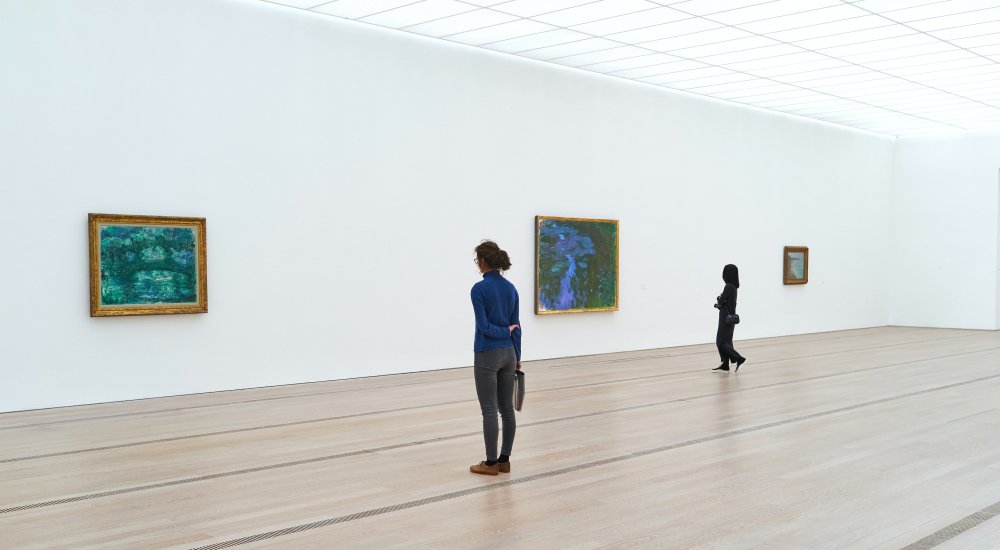Fellowship in History of Art and Visual Culture at the Metropolitan Museum of Art

The History of Art and Visual Culture Fellowship supports independent research projects that make use of the extensive Met collection and Museum resources. Intended for the close study of objects, artworks, and visual traditions, this fellowship encourages original scholarship that advances critical perspectives within the applicant’s field. During their fellowship term, fellows spend the majority of their time pursuing their proposed projects and developing their work in collaboration with departmental supervisors, fellow cohort members, and staff across the Museum. Fields of study may include, but are not limited to, the history of art and architecture, critical theory, media studies, anthropology, and archaeology.
Depending on the needs of their host curatorial department, as well as the relevance of their research interests, fellows might be asked to assist with upcoming projects and exhibitions. However, not all departments request this support.
Eligibility
- PhD candidates through senior postdoctoral scholars are eligible to apply. MA students and PhD students who have not yet defended their dissertation proposal are not eligible.
- Junior fellowships are awarded to those applicants who are working on their PhD on the application deadline date. Applicants who receive their PhD after the submission deadline are not eligible for the senior fellowship.
- Senior fellowships are awarded to those applicants who hold a PhD on the application deadline date and/or are well-established scholars.
- All fellows are expected to have valid US work authorization for the entire duration of the fellowship. If you are not a US citizen or permanent resident, please review the additional details in the Fellowship Application FAQs, and ensure you have confirmed your eligibility prior to submitting an application.
Compensation
The number of fellowships awarded depends on funds and resources available.
Stipend
- Junior fellows receive a stipend of $47,000.
- Senior fellows receive a stipend of $57,000.
Travel: Both junior and senior fellows also receive an additional $6,000 for research travel (maximum of six weeks).
Health insurance: Fellows receive an additional monthly payment to offset the cost of health insurance.
Important Dates
Application deadline: Friday, October 17, 2025, 5 pm ET
Notification date: All applicants will be notified by the last Friday in February following the application deadline.
Fellowship period: September 1, 2026 through August 31, 2027
How to Apply
All applications, including letters of recommendation, must be submitted through our online application portal and in English. The Met will not accept applications or related materials via email, postal mail, or in person.
History of Art and Visual Culture applicants must submit the following (as .dox or .pdf files):
- A project proposal, not to exceed 1,000 words, which addresses why The Met is uniquely suited to your fellowship objectives, what you wish to accomplish during the fellowship period, and how you can utilize the Museum's resources and collections to achieve your goals
- A brief schedule of work to be accomplished during the fellowship period (separate from project proposal)
- A brief schedule of travel required (maximum of six weeks) during the fellowship period
- A curriculum vitae of education, professional experience, honors, awards, and publications
- Three letters of recommendation. Applicants must submit at least one academic and one professional letter of recommendation. All letters must be submitted in English and uploaded directly by the recommenders. Recommenders may not be current Met staff, contractors, or volunteers.
- Official transcripts (undergraduate and graduate)—for predoctoral (junior) fellowship applicants only
If you have not yet completed your PhD, you must upload a copy of your undergraduate transcript and graduate transcript. If you have transcripts from more than one institution for either category (undergraduate or graduate), please upload them as one combined file.
Apply now
Application deadline: Friday, October 17, 2025, 5 pm ET
Met Fellowship Program Online Information Sessions
Join a 45-minute online information session to learn more about the 2026–2027 Met Fellowship Program and the application process.
What to Expect After Applying
Once submitted, staff in relevant department(s) first review your application to assess the quality and feasibility of your application according to the criteria set forth on the evaluation rubric. If your proposal meets the necessary criteria, the department(s) recommend it for review by The Met’s Grants Committee, which consists of members of The Met’s professional staff appointed by the Museum’s Director and Chief Executive Officer. The committee reviews all aspects of each application submitted, using the evaluation rubric (see above). Following this assessment, the Grants Committee submits final award recommendations to the Director and CEO for review and approval. You are notified regarding the result of your application by the last Friday in February.
Please note that due to the lengthy and multiperspective review process, we are unable to provide individual feedback on applications that are not selected.
Selection Criteria
How will my application be assessed?
Applications are evaluated based on the criteria set forth in The Met’s evaluation rubric for History of Art and Visual Culture and Interdisciplinary Fellowship applications.
Reviewers consider all your application materials: your personal statement, project proposal, CV, transcripts, and letters of recommendation. They use the rubric to score your application, but this serves only as a guide. There is no cut-off score for progressing in the review process or being awarded a fellowship. View the evaluation rubric. (PDF)
